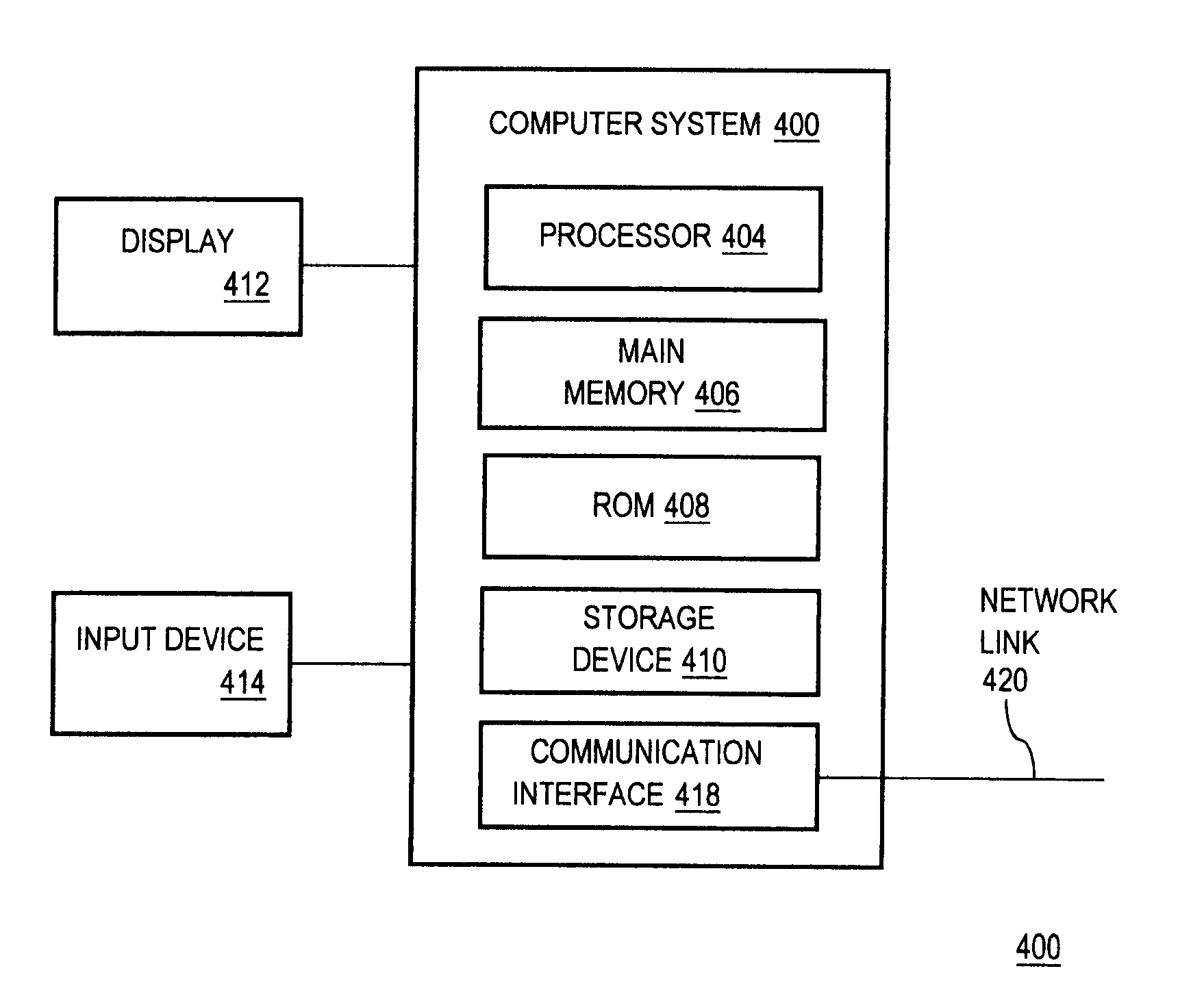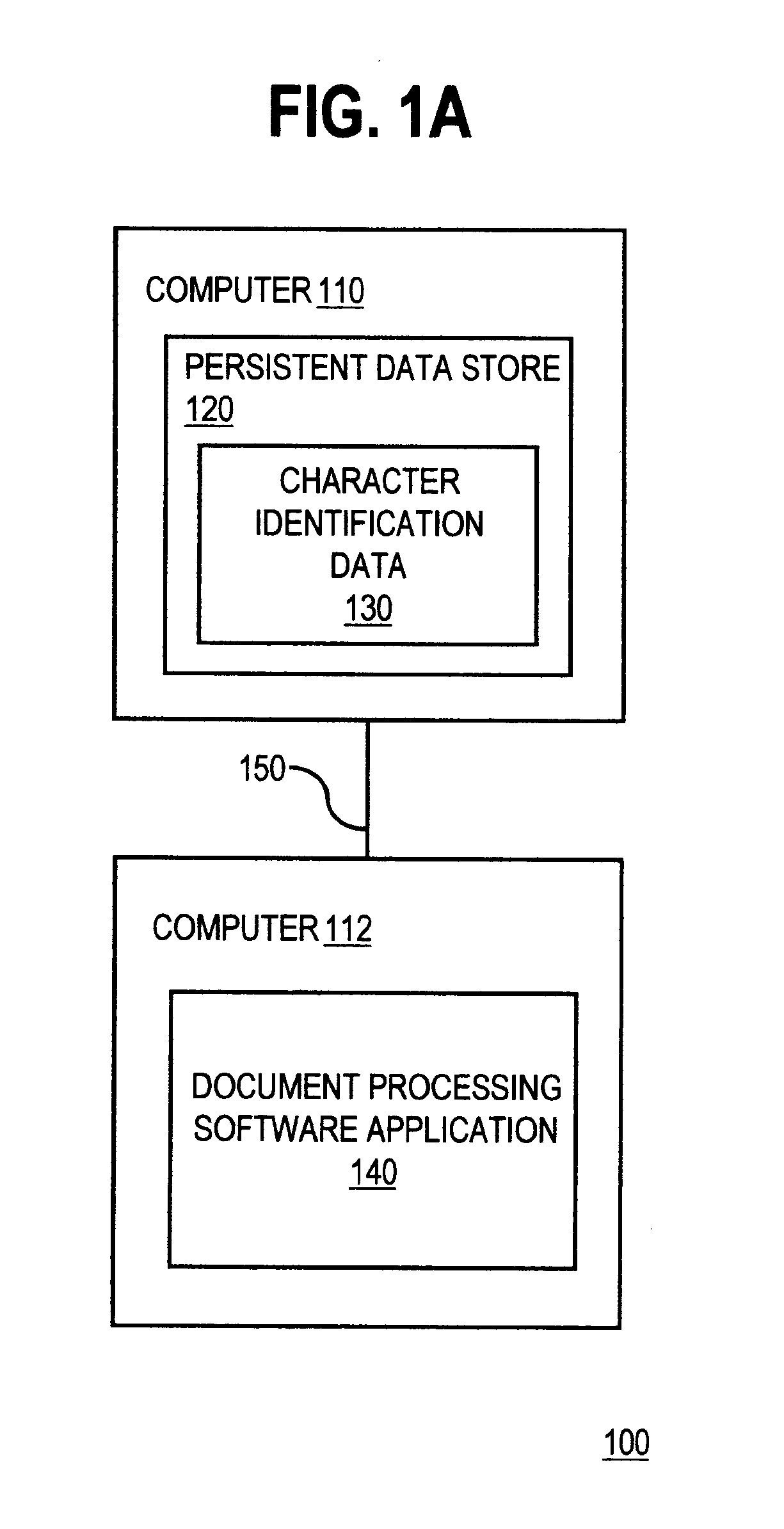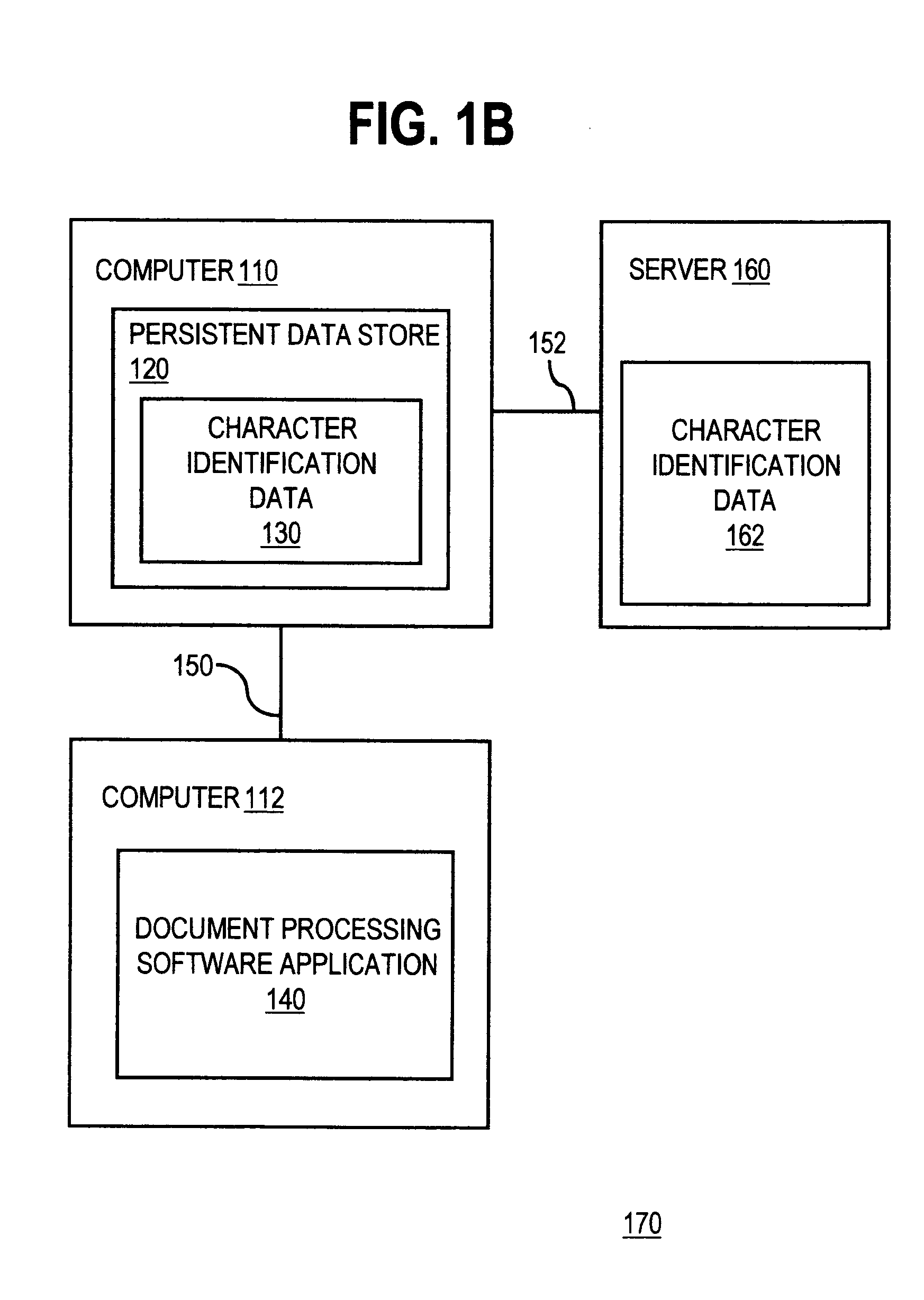Character identification through glyph data matching
- Summary
- Abstract
- Description
- Claims
- Application Information
AI Technical Summary
Benefits of technology
Problems solved by technology
Method used
Image
Examples
Embodiment Construction
[0006]Techniques are provided for enabling a computerized entity to recognize characters of an electronic document. In a persistent data store, character identification data is stored. Character identification data is data that, for one or more characters of one or more fonts, associates (a) glyph data for a character with (b) code point data for the character, where the glyph data describes how to render the character on or to an output device, and the code point data identifies, to the machine, the identity of the character. Character identification data may be used by applications to identity characters within an embedded font document that lacks code point data for those characters.
[0007]Embodiments of the invention may create, update, store, and represent character identification data in a variety of different ways. For example, in an embodiment, character identification data may be created by using a hash function to obtain a hash value of the glyph data associated with a part...
PUM
 Login to View More
Login to View More Abstract
Description
Claims
Application Information
 Login to View More
Login to View More - R&D
- Intellectual Property
- Life Sciences
- Materials
- Tech Scout
- Unparalleled Data Quality
- Higher Quality Content
- 60% Fewer Hallucinations
Browse by: Latest US Patents, China's latest patents, Technical Efficacy Thesaurus, Application Domain, Technology Topic, Popular Technical Reports.
© 2025 PatSnap. All rights reserved.Legal|Privacy policy|Modern Slavery Act Transparency Statement|Sitemap|About US| Contact US: help@patsnap.com



